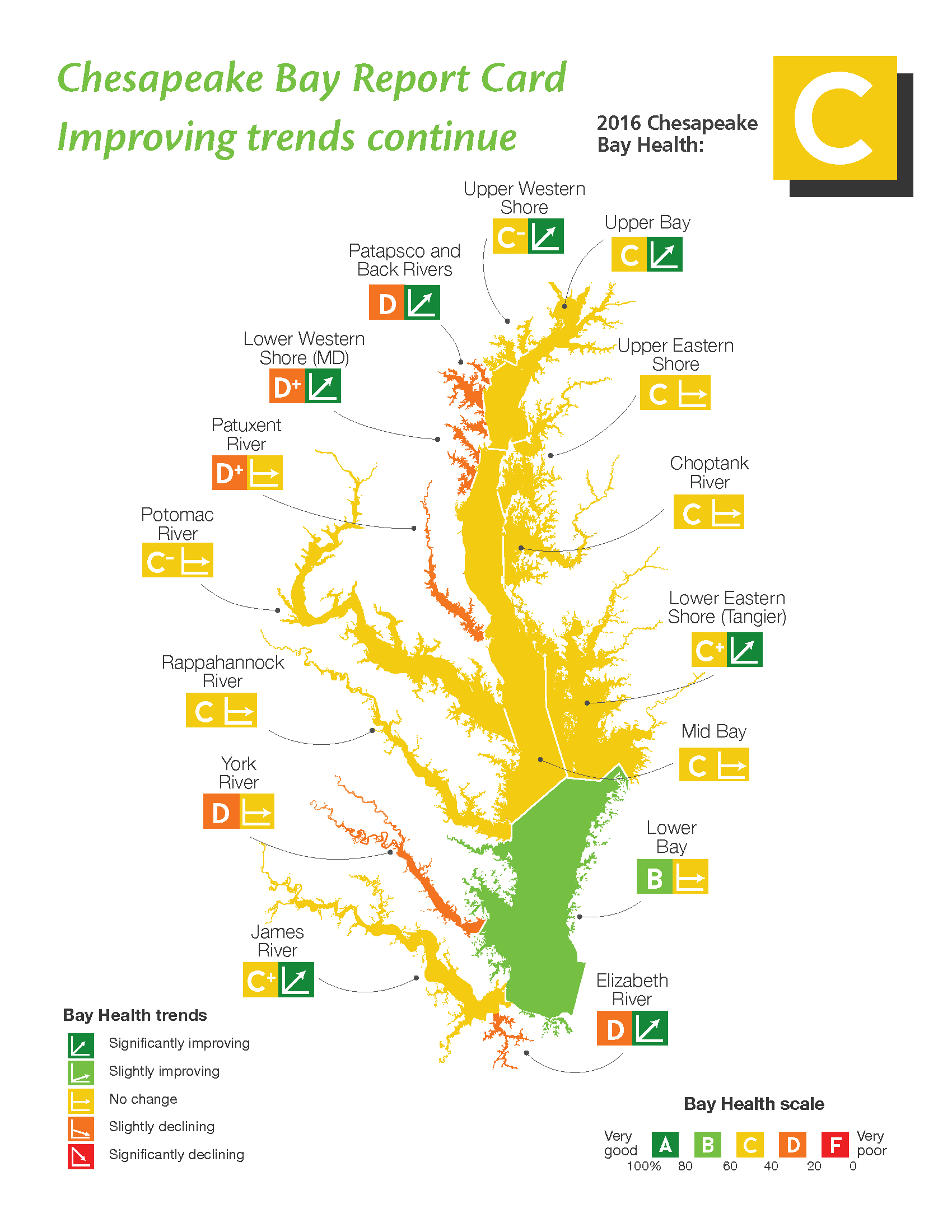The overall health of Chesapeake Bay improved in 2016, a positive sign that recovery efforts are working. The largest estuary in the nation scored a C grade (54%) in the 2016 report card, one of the highest scores calculated by scientists at the University of Maryland Center for Environmental Science (UMCES). While only a slight improvement, it’s encouraging that the overall health remained steady despite many pressures on the Chesapeake Bay and across its watershed. In addition, fish populations greatly improved to an A (90%).
“We are happy to see that our beloved Chesapeake Bay continues its recovery. These scientifically rigorous report card results are telling us that we are indeed heading in the right direction,” said Dr. Bill Dennison, Vice President for Science Application at the University of Maryland Center for Environmental Science. “We still have a long way to go to fully restoring the Bay, so we need to have our diverse partnerships of people and organizations continue to work together to reduce the runoff of sediments and nutrients into the Bay.”
The Fisheries Index is made up of blue crab, striped bass, and bay anchovy indicators, which are ecologically, economically, and socially important fish species in the Chesapeake Bay. This index, which increased greatly over the last year, tends to be more variable than the Bay health index. The encouraging fisheries grade (A) is an indicator of continued momentum in the recovery of the Bay’s health. Sustained protection and restoration of the watershed by reducing nutrient and sediment pollution support healthy fisheries.
Most of the indicators comprising the Chesapeake Bay Health Index remained steady in 2016. The total area of the Bay covered by aquatic grasses increased. This important Bay habitat provides a home for blue crabs and striped bass. There were also improvements in seven Bay regions, with the greatest improvements in the Patapsco and Back Rivers, Patuxent River, and the Lower Eastern Shore. The Patapsco and Back Rivers encompass Baltimore, an important urban center that has made great strides to reduce pollution and support the Bay.
The University of Maryland Center for Environmental Science’s Integration and Application Network produces this report card annually to assess the health of Chesapeake Bay waterways, to enhance and support the science, management and restoration of the Chesapeake Bay. For more information about the 2016 Chesapeake Bay Report Card including region-specific data, visit https://chesapeakebay.

